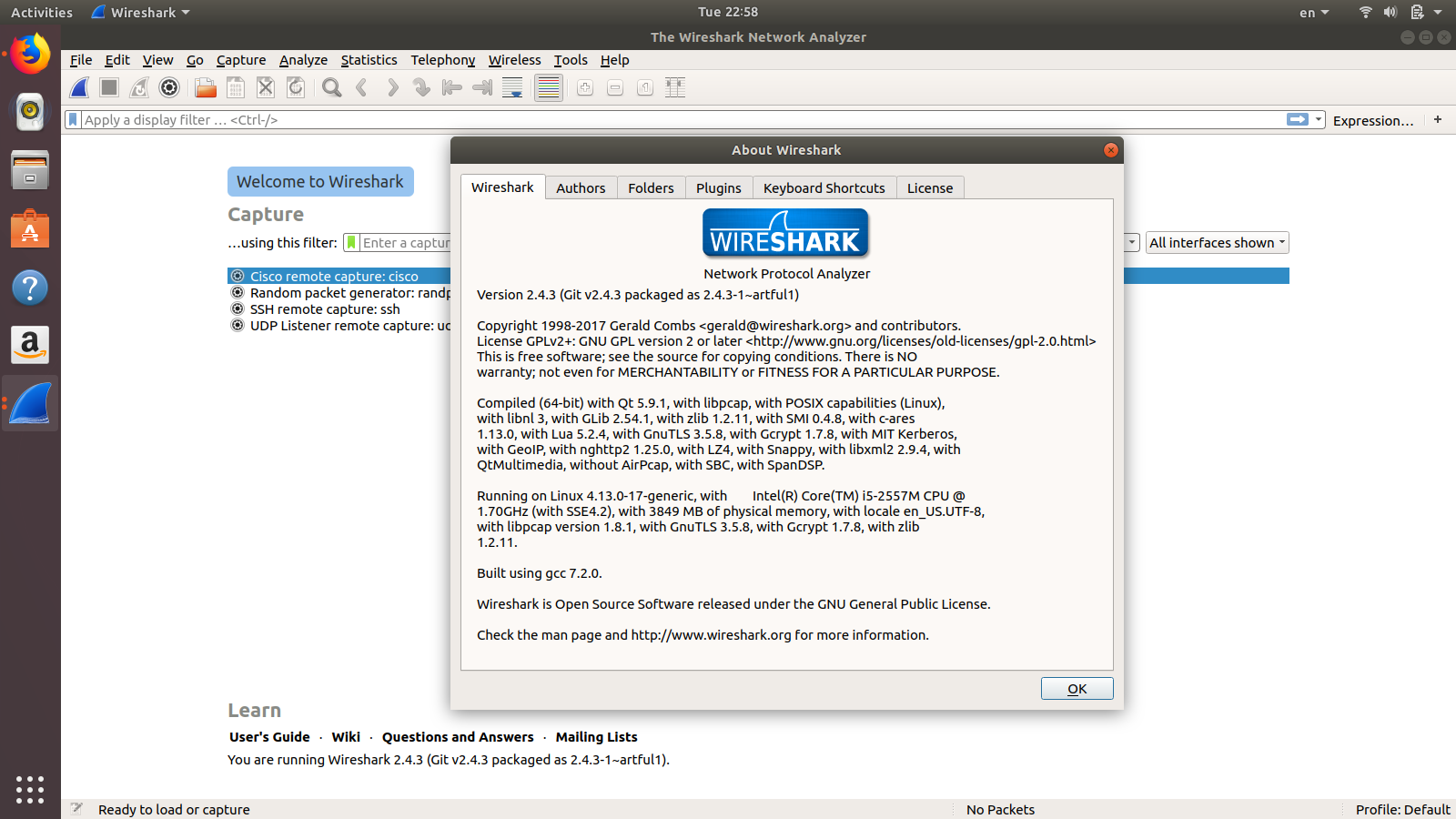

Step #1: After launching, you'll see this dialog.

It should be noted that when you run it you'll still be presented with a dialog which makes you think it didn't work, but this is just giving you the opportunity to either run wireshark as yourself, "unprivileged", or as root. Once you've made the above changes you can now launch wireshark. But you might not get the latest package for Wireshark using this method. NOTE: It should be noted here that after making the above changes you'll need to logout and log back in so that the new group gets picked up by your username. Install Wireshark on centos using the following command, sudo yum install wireshark wireshark-qt.

2 Install the libpcap package with the following command. So if you use Wireshark in the terminal, you can not install this package. yum install gtk This package is used to create a wireless graphical environment. $ setcap cap_net_raw,cap_net_admin=eip /usr/sbin/dumpcap Tutorial Wireshark installation on CentOS Linux 1 First, install the GTK package with the following command. You need to perform the following steps to allow non-root users access to the dumpcap file so that they can open it for use within tshark/wireshark. Installing Wireshark under CentOS If you wish to use the free and open-source (FOSS) network packet analyzer Wireshark on a CentOS Linux system, e.g., CentOS 7, you can install the command line interface (CLI) version of the software, TShark, with yum install wireshark. The Amazon AMI images are based on CentOS images and so the steps I outlined in that answer should apply here as well. See my answer to this other U&L Q&A titled: “tshark: There are no interfaces on which a capture can be done” in Amazon Linux AMI.


 0 kommentar(er)
0 kommentar(er)
